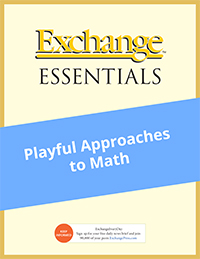ExchangeEveryDay Past Issues
 << Previous Issue
| View Past Issues | | Next Issue >>
<< Previous Issue
| View Past Issues | | Next Issue >> -Maya Angelou
“Our programs and classrooms pulse with children who throw tantrums, kick, bite, stomp, wail, run, or hide,” writes Holly Elissa Bruno in an article that’s part of the new Exchange Essentials collection, “Trauma-Informed Practice.” Bruno explains that “children who act out cry out for help. Children who kick have been kicked. Children who act invisible are dying to stop holding their breath…
Throughout my childhood, I survived incest and blackout beatings. Yet, here I am, a testament to the teachers who helped, and more whole because I was broken. I am not alone. We empathize with traumatized children, in part because the majority of us survived abuse or neglect. One (unpublished) study by colleague Jackie Taylor reveals that 58 percent of early childhood teachers experienced childhood trauma (Master’s thesis, 2006).
When I ask ECE professionals across the country: “Did you experience a nurturing childhood,” no less than 75 percent of us describe our early years as outright dysfunctional. The Adverse Childhood Experiences (ACEs) study (2010) enumerates the knee-capping effects childhood trauma has on our adult lives. (TED Talk, Dr. Nadine Burke Harris)
Although dispiriting, these realities can be liberating. How? In the most simply elegant of relational ways, we can be the first in a child’s life to see, hear, and affirm the child. We can help the child find and express her voice. We can co-create safe sanctuaries where children can breathe and play. We can comfort and soothe children so they can learn to find safety within. We could wait for credentialed therapists to appear, magically funded, on our staff. Or we could ask: What is within our power, capacity, and skill set to help each child feel whole, indeed holy?”
Playful Approaches to Math |






Post a Comment